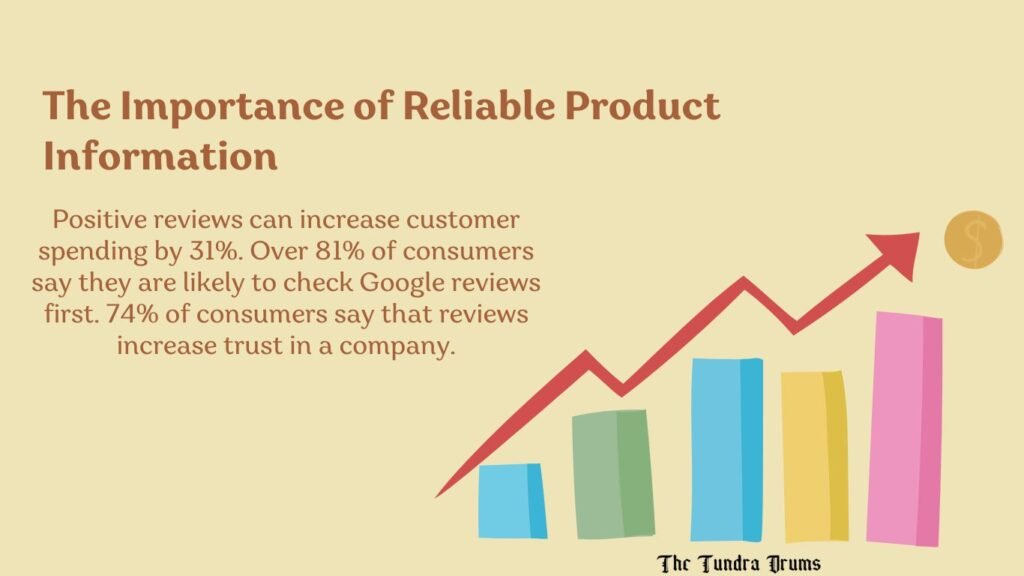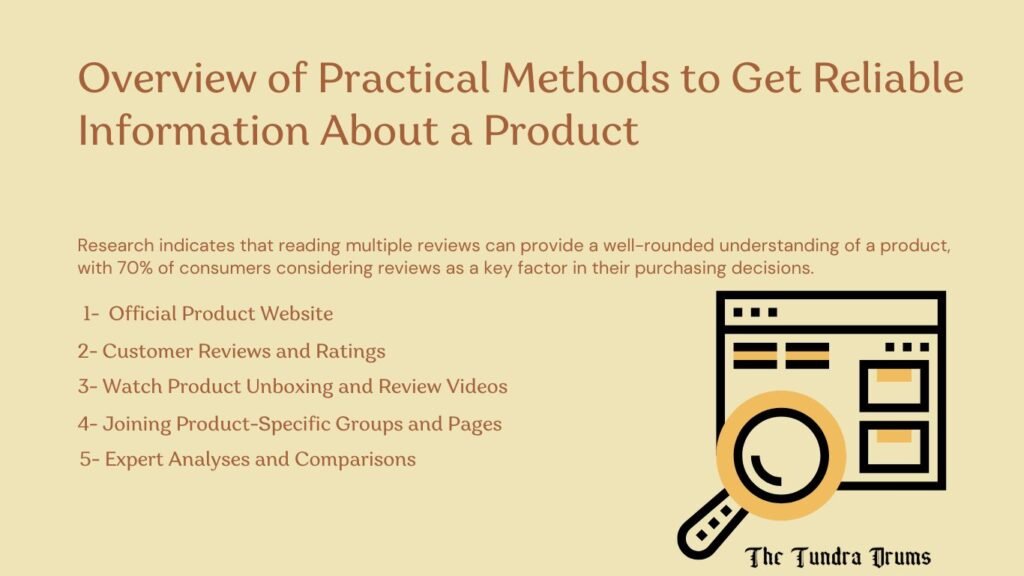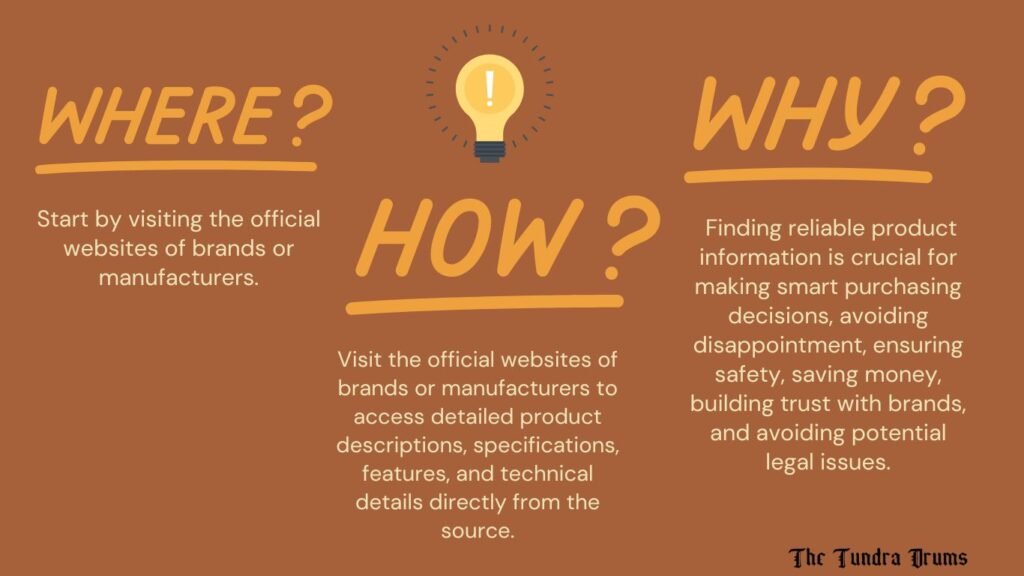Have you ever purchased something online that didn’t meet your expectations? This common frustration highlights the critical importance of reliable product information. You can find accurate and detailed product information that helps consumers make informed decisions, ensuring they get exactly what they need and expect.
Reliable product information builds trust between the brand and the customer. When consumers can count on accurate product descriptions, images, and specifications, they feel more confident in their purchases. This confidence increases customer satisfaction and reduces the likelihood of returns and complaints. In a competitive market, brands that offer transparent and reliable information stand out, attracting and retaining loyal customers.
The Importance of Reliable Product Information

Customers demand and manufacturers strive for increasingly higher product reliability. Statistics play a key role in achieving product value. Ensuring high reliability of a modern product is an engineering challenge, but statistical concepts and tools have become important elements of a proactively oriented product design process.
Some key statistics about the importance of reliable product info:
- 95% of customers read online reviews before buying a product.
- 89% of consumers make an effort to read reviews before buying products online.
- 49% of consumers trust online reviews as much as personal recommendations.
- 94% say reviews have made them avoid a business.
- 97% read reviews for local businesses.
Statistical analyses provide confidence intervals for reliability estimates, allowing manufacturers to quantify the uncertainty associated with their predictions. For example, a manufacturer might determine that a product has a 10-year reliability of 99.4%, with a 95% confidence interval indicating a lower bound of 96.1%. This information is crucial for decision-making regarding production and market launch.
Overview of Practical Methods

In today’s world, where information overload is common, mastering the skill of product research is crucial.
Understanding a product’s features, specifications, and performance requires a clear and systematic approach.
1- Official Product Website
Official product websites offer essential resources for consumers seeking reliable information. Official websites provide comprehensive descriptions of products, detailing their features, functionalities, and unique selling points.
Specifications such as dimensions, materials used, and technical capabilities are often listed to help consumers make informed decisions.
2- Customer Reviews and Ratings
Reading multiple reviews provides a well-rounded understanding of the product. Each reviewer may highlight different aspects, such as performance, durability, and ease of use.
This diversity of opinions helps form a more comprehensive picture, allowing potential buyers to weigh the pros and cons before deciding.
Pro Tip: It’s essential to discern between genuine reviews and those that may be biased or fake. Genuine reviews often include specific details about the user’s experience with the product, addressing both pros and cons. Look for authentic reviews and meaningful insights based on actual usage. Be cautious of reviews that appear overly positive or negative without substantial justification.
3- Watch Product Unboxing and Review Videos
Watching product unboxing and review videos is one of the best ways to get valid information about a product, and it has become increasingly popular among consumers looking to gather detailed insights before purchasing online products. Here’s why it’s beneficial:
- Videos visually demonstrate the product being unboxed, assembled (if applicable), and used in real-time. This offers a practical understanding of its size, design, and operation, which static images or text descriptions may not fully convey.
- Many review videos compare the product with similar alternatives in the market. This comparative analysis helps viewers understand how the product stacks up against its competitors regarding price, performance, features, and overall value.
4- Joining Product-Specific Groups and Pages
Joining product-specific groups and pages on social media platforms, online buying sites and forums can be highly beneficial when researching a product. Here’s why:
- These groups and pages are dedicated to specific products or brands, providing most reliable sources of the product, focused discussions, updates, and user experiences directly related to the product you’re interested in.
- Members often share tips, tricks, and hacks to maximize the product’s capabilities or overcome common issues. This practical advice can enhance your user experience and help you make the most of your purchase.
- Some product-specific groups or pages may also provide exclusive updates on new features, firmware updates, or special offers from the manufacturer or retailers, keeping you informed about the latest developments.
5- Expert Analyses and Comparisons
Expert analyses and comparisons are crucial in helping consumers make informed decisions when choosing products. Experts provide thorough evaluations of products based on their knowledge and experience. They analyze various aspects such as performance, durability, usability, and value for money, offering detailed insights that go beyond basic specifications.
What Percentage Of Fake Reviews Are Detected By Platforms Before They Are Published?

- Estimates suggest that 16-50% of online reviews are fake or manipulated, depending on the sector or product.
- Researchers have developed machine learning models that can detect fake reviews with high accuracy, ranging from 72% to 97% precision. This suggests platforms could potentially detect a significant portion of fakes using automated methods.
- However, the search results also note that fake reviews are becoming more sophisticated, with paid reviewers instructed to sound authentic. This makes detection more challenging.
Where, How, And Why to Find Reliable Sources

Finding reliable sources is essential for obtaining accurate information, especially when researching products or making important decisions. Here are some tips on where, how, and why to find reliable sources:
- Where to find: Start with the official websites of brands, manufacturers, or organizations. Try to find up-to-date information about the products. They typically provide detailed and accurate information about products, services, and company policies.
- How to identify: Ensure the information is current and up-to-date. Some topics may require recent data or developments to make informed decisions.
- Why to find: Relying on credible sources mitigates the risk of errors, misunderstandings, or negative consequences resulting from inaccurate information.
FAQs
How do I spot fake reviews?
Look for overly positive or negative language, check reviewer profiles for authenticity, compare reviews across platforms, and watch out for repetitive or similar language patterns.
What should I look for in an expert review?
Check the reviewer’s expertise and authority in the field, ensure objectivity with balanced analysis, review detailed testing methods, and verify transparency regarding conflicts of interest.
How to find the most reliable source of information about a health care product?
Consult healthcare professionals, use official health websites, read peer-reviewed articles, check the manufacturer’s website, look for evidence-based information, and compare information across multiple reliable sources.
How reliable are social media reviews?
Consider social media reviews from verified users or credible influencers, evaluate engagement and diversity of opinions, be aware of potential biases from compensated influencers, and seek transparency about relationships.
What are the benefits of testing a product in-store before purchasing?
Gain hands-on experience to assess build quality and ergonomics, evaluate performance immediately, ask questions directly to staff, compare alternatives on-site, and address any concerns before purchasing.











